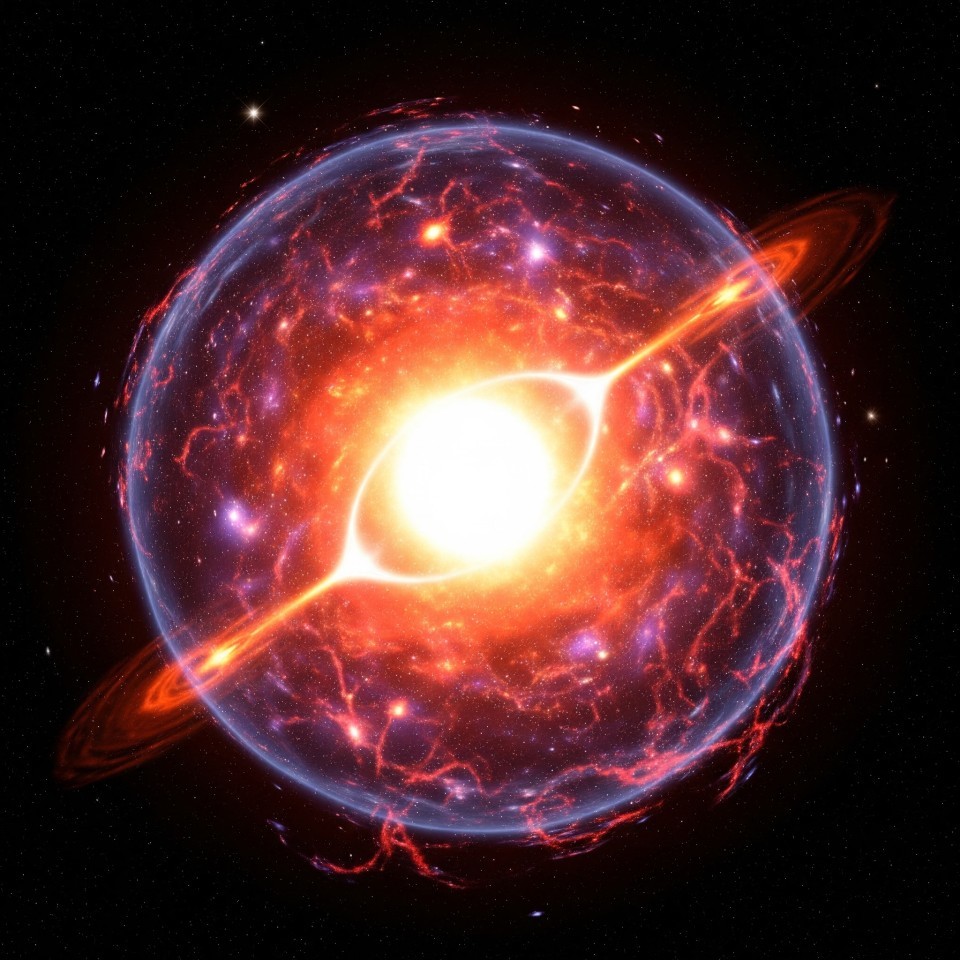Space News & Blog Articles
The Big Bang
Universe's Origin
The Big Bang theory is the leading scientific explanation for how the universe began. It proposes that the universe began about 13.8 billion years ago from an extremely hot, dense point and has been expanding ever since. This document provides a concise overview of the key concepts and evidence supporting the Big Bang theory.
The Beginning: A Hot, Dense State
At the very initial moments, the universe was incredibly compact, hot, and dense. All the matter and energy of the universe were concentrated in a singularity—a point of infinite density. It's difficult to describe what exactly happened at the moment of the Big Bang itself, as current physics breaks down at such extreme conditions.
Cosmic Expansion and Cooling
Immediately after this initial singularity, the universe began to expand rapidly. This expansion caused the universe to cool, allowing for the formation of fundamental particles.
- Quark-Gluon Plasma: In the very early universe, the high temperatures meant that quarks and gluons (the building blocks of protons and neutrons) existed as a hot plasma, rather than being bound together.
- Nucleosynthesis: As the universe continued to cool, approximately a few minutes after the Big Bang, protons and neutrons began to form. Within the first 20 minutes, temperatures dropped sufficiently for these particles to fuse, forming the nuclei of light elements like hydrogen, helium, and trace amounts of lithium. This process is known as Big Bang nucleosynthesis.
- Recombination: About 380,000 years after the Big Bang, the universe had cooled enough for electrons to combine with these atomic nuclei, forming stable, neutral atoms. This event, called recombination, made the universe transparent to light, allowing photons to travel freely. These photons are what we observe today as the Cosmic Microwave Background.
Formation of Stars and Galaxies
Over millions of years, tiny fluctuations in the density of matter, which originated from quantum fluctuations in the early universe, began to grow under the influence of gravity. These denser regions attracted more matter, eventually leading to the formation of the first stars and galaxies.
- First Stars: The earliest stars were massive and short-lived, burning through their fuel quickly and enriching the universe with heavier elements through supernovae.
- Galaxy Formation: These early stars and gas clouds eventually coalesced into the first galaxies, which then grouped together to form larger structures like galaxy clusters and superclusters, leaving vast voids in between.
Key Evidence for the Big Bang
The Big Bang theory is supported by several lines of observational evidence:
- Expansion of the Universe (Hubble's Law): In the 1920s, Edwin Hubble observed that galaxies are moving away from us, and the farther away a galaxy is, the faster it is receding. This implies that the universe is expanding, much like a rising loaf of raisin bread with the raisins moving farther apart.
- Cosmic Microwave Background (CMB) Radiation: The CMB is faint radiation filling all of space, discovered in 1964 by Arno Penzias and Robert Wilson. It is considered the "afterglow" of the Big Bang—the relic radiation from the time of recombination when the universe became transparent. The CMB's uniform temperature and slight anisotropies are precisely what the Big Bang model predicts.
- Abundance of Light Elements: The observed ratios of hydrogen, helium, and lithium in the universe closely match the predictions made by Big Bang nucleosynthesis, providing strong evidence for the conditions of the early universe.
- Large-Scale Structure of the Universe: The distribution of galaxies and galaxy clusters across the cosmos, forming a cosmic web of filaments and voids, is consistent with simulations based on the Big Bang model and the growth of structures from initial density fluctuations.
The Future of the Universe
While the Big Bang describes the origin, the ultimate fate of the universe is still an active area of research. Current observations suggest that the universe's expansion is accelerating, driven by a mysterious force called dark energy. This accelerated expansion implies that galaxies will continue to move farther apart, eventually leading to a "Big Freeze" or "Heat Death" where the universe becomes cold, dark, and empty.
When you subscribe to the SpaceZE News Feed, we will send you an e-mail when there are new updates on the site so you wouldn't miss them.


